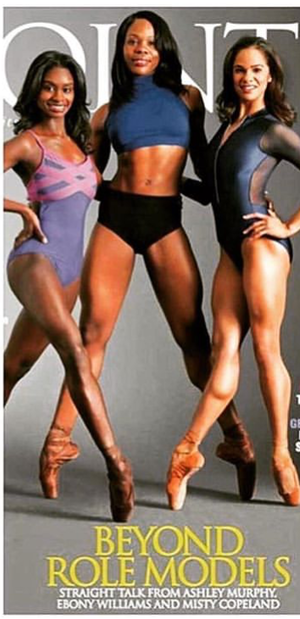Why I’m Still a 'Woman in Tech'
Dear ‘Woman in __________’,
I get it. The desire to drop “I’m a woman in” from your experience is strong.
You don’t want to feel like a token. You are growing weary of the panels, the events, and the flurry of activity that surrounds us once a year for International Women’s Day.
YOU WANT TO BE RECOGNIZED FOR YOUR EXPERIENCE; YOUR EXPERTISE AND WONDER IF THIS DIMINISHES THAT RECOGNITION.
You have lived life as a woman in your field for long enough that your skin has grown thicker; your ability to navigate the pitfalls has become second nature; maybe you’ve become a little cynical.
You are done hearing about how we’ve cracked the glass ceiling – yet women at the helm of a C Suite, a board or a major organization are rare (even when the company is geared toward female clients). When women are in those positions, they are an endangered species, their time there is limited and what it takes to remove them is far less than their male counterparts.
You are done attending major conferences in your field that promote special rates to encourage a higher level of female participation. They include a dedicated female track which highlights the challenges and successes of women in your industry. Then, when you look over the rest of the schedule, you see the ‘manels’ spring up everywhere.
When the topic is geared toward a female audience, women are front and center. When the topic is the latest trends, where the industry is headed or more ‘serious’ discussion, we return to the Where’s Waldo game of spot-the-woman (Hint: She is the moderator)
Yet, they can boast about the level of gender parity among attendees and presenters.
Par for the course.
YOU ARE TIRED OF THE STATS, STATS, STATS SHOWING HOW LITTLE HAS CHANGED AND YET, YOU THINK, WITH ALL THE INCREDIBLE YOUNG TALENT COMING UP BEHIND YOU, WITH ALL THE CHANGES IN ATTITUDE IN YOUNGER MEN AND WOMEN, THINGS WILL BE DIFFERENT FOR THEM.
Take a look at this photo.
Ballet.
Reaching the principal role requires years of gruelling training, determination, and talent. Traditionally, it also requires a long, lean physique and being white.
Misty Copeland (pictured, right) has all of the former and is neither of the latter. She became the first African American woman to secure a principal role in the history of American Ballet.
She broke barriers surrounding race and how a ballerina is supposed to look. Misty brought attention to the lack of skin tone options available to ballerinas for their shoes and bodywear. She has muscles (gasp!) and athletic apparel companies cannot wait to highlight her physique.
Her success proves it can be done. A woman of colour can be a principal ballerina.
YET MISTY’S SUCCESS DOESN’T CHANGE THE FACT THAT SHE IS AN ANOMALY IN THE BALLET WORLD.
That magazine cover inspired the next generation of young African American ballerinas to recreate it and post their photos on social media. (I have chosen not to repost them here to respect their digital privacy)
THOSE WERE THE PHOTOS THAT CAUSED ME TO DOUBLE DOWN. THE SHEER JOY AND IDENTIFICATION THAT THOSE TALENTED GIRLS FELT RADIATED FROM THEIR PICTURES.
Those girls who are inspired by Misty, Ashley, and Ebony cannot ride inspiration all the way to a principal role. Their talent, training, and determination will be met with reality and it is going to hit hard. They still don’t fit the ideal. Institutional change, when it happens, is slow.
The truth is there will be more people in a position of power who would prefer to keep Misty Copeland an outlier and who will simultaneously leverage her accomplishment as proof that the industry is progressing.
I see it today in the next generation of women in tech, leadership, and business.
Yes, we are encouraging young women to lean in and be limitless in their beliefs.
Yes, they are attending school in greater numbers than their male classmates.
Yes, their male classmates don’t think it is unusual for females to code, conduct scientific research or lead.
THEN REALITY SETS IN.
Those women are hired into an all-male developer group that struggles with inclusion.
They are sought for their female perspective or the photo op and relegated to the sidelines for all else.
The research funding, recognition and senior promotions pass them by.
And in a decade, women will still be underpaid, we will see the same small number of women leading large organizations and the same large number of women fleeing the glass ceiling to start their own businesses only to find the start-up funds non-existent for their gender.
FOR THAT REASON, I AM GOING TO CONTINUE TO PROMOTE THE HELL OUT OF THE SUCCESSFUL WOMEN I KNOW – AND THE ONES I HAVE NEVER MET.
I am going to identify our true male allies and promote the hell out of them too.
I am going to draw attention to the inequities of funding, the prevalence of ‘manels’ and the token expressions of support.
I am going to call bullshit whenever I hear the excuses as to why women were not represented; not considered; not cited.
I know why you want to let go, but please, hang on to that title. Being a ‘woman in…’ isn’t something to be ignored, packed away or outgrown.
It isn’t about us.
We aren’t the first.
But if we polish that title till it shines and draw attention to it every chance we get until we wear it out – we just might be the last.

